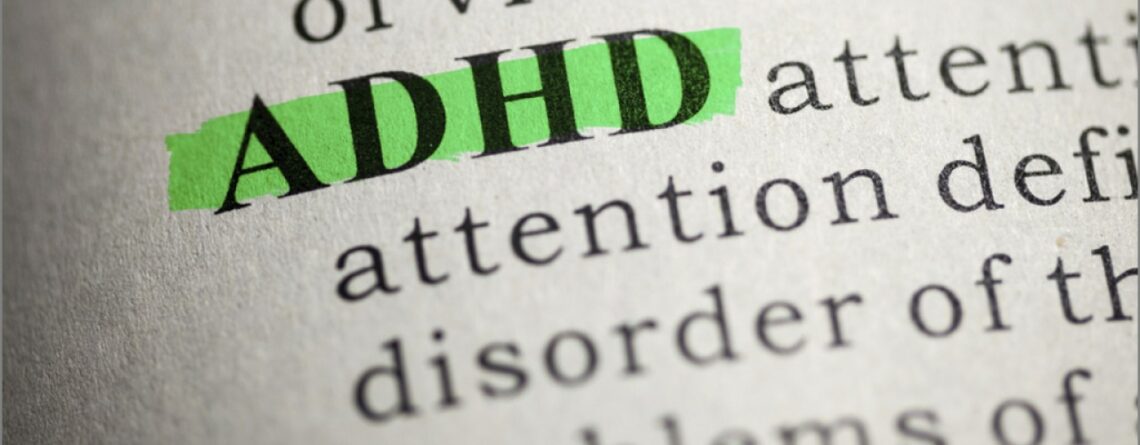ADHD: Learn All About the 3 Types
The Nystrom & Associates provider consulted for this article is Megan Septer, PsyD, LP, Clinical Site Director/Licensed Psychologist.
Attention-Deficit Hyperactivity Disorder (ADHD) is a mental health diagnosis where symptoms of inattention and/or hyperactivity/impulsivity begin at a young age and can persist throughout adulthood. ADHD is one of the most common mental health disorders that affect children. The three main types of ADHD are predominantly inattentive, hyperactive/impulsive, and combined. Symptoms can range from mild to severe and vary based on the individual, but recognizing the signs and symptoms is pivotal in getting help early on.
It can be hard to distinguish between ADHD and normal behavior from kids. For instance, if you only notice a few of these symptoms in a child or the signs present themselves in specific situations, it's most likely not ADHD. However, take note if you are observing several of these behaviors across all kinds of situations.
Hyperactive/Impulsive Presentation
Predominately hyperactive/impulsive presentation is the least common type of ADHD. It is exactly how it sounds; the person will be constantly on the move and display impulsive behavior. They might be doing several things at once, constantly bouncing, or act without thinking. However, the individual will not show signs of getting distracted. For this type, symptoms include:- Often interrupting others
- Talking out of turn or blurting out
- Fidgeting/squirming
- Taking risks and not understanding the consequences of their actions
- Frequently getting up when seated
- Problems controlling powerful emotions, which can lead to anger issues
Inattentive Presentation
With an inattentive presentation of ADHD, a person will not display any of the signs of hyperactive/impulsive behavior. Rather, they will find it difficult to stay on task and become distracted easily. When many think about ADHD, hyperactivity comes to mind the most. But the quiet person that daydreams often can also have ADHD. Symptoms of inattentive ADHD include:- Not listening
- Inattention to detail
- Difficulty following instructions
- Getting bored with a task and not completing it
- Issues with planning/organizational skills
- Being forgetful or distracted
- Frequently misplacing belongings
Combined Presentation
Combined presentation is the most common type of ADHD and is when symptoms of both types are present. Related: Tips for Having a Successful Summer BreakTreatment & Management of ADHD
ADHD can be managed, but it’s important to address it as early as possible. In other words, if you’re concerned - seek professional help. Megan Septer, PsyD, LP, Clinical Site Director/Licensed Psychologist at Nystrom & Associates, explains some treatment alternatives:Individuals with ADHD can participate in a variety of treatment options to manage their symptoms including therapy, skills training, parent training, medication management, and support through the school. Many people with ADHD benefit from using strategies such as setting reminders on their phone, writing out a to-do list, writing important information on a calendar or whiteboard, regular exercise, and taking tests in a quiet room that is free of distractions.In addition to the tips Megan shared, there are other ways to manage ADHD at home or work, such as:
- Minimizing external commotion: Limit potential distractions by facing your desk differently and keeping your workplace clutter-free.
- Getting plenty of rest: Lack of sleep can increase symptoms of ADHD. Make rest a priority. For instance, implement a bedtime routine and stick to it.
- Limiting junk food: A poor diet doesn’t cause ADHD. However, unhealthy eating habits can make symptoms worse. Try to avoid sugar and junk food whenever possible.
A Word From Nystrom & Associates
Above all, knowledge is power. If you think you or your child may have ADHD, request an appointment to get an evaluation. Nystrom & Associates offers ADHD evaluations for individuals ages 6 and up. Our Psychological Testing program provides quality testing and individualized recommendations for children, adolescents, and adults. Once diagnosed, therapy can address any social, behavioral, and emotional issues that you or your child may be experiencing.
For more information on ADHD, click here.
Related: 3 Ways Meditation Helps Your Mental Health





